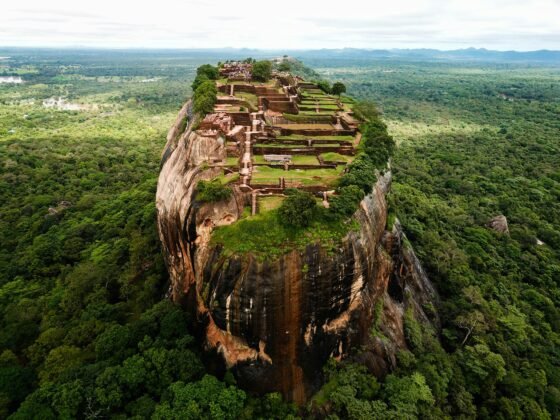Driving through Mexico isn’t as dangerous as many people think, especially if you know which areas to avoid. It’s just like any other country, so here are some tips if you’re considering exploring this vast and beautiful country and its culture.
Know Where To Stay, And Where Not To Stay
Knowing where to stay, and where not to stay, is important. Places like the Baja California Sur and the Yucatan, are generally safe places. Also be sure to check out San Luis Potosi, Chiapas Water Route, and Copper Canyon.
Rent A Vehicle
Traffic laws in Mexico can be rather lax, so while you should consider renting one of these sedan cars, you also have to drive cautiously, because you might end up in a fender-bender through no fault of your own.
Border areas can be risky to drive through, if only because there is more crime in these areas. It’s a good idea to watch the behavior and attitude of other drivers and pedestrians, but don’t follow their lead. Drive at or below the posted speed limit. In the U.S., most people push the speed limits, but in Mexico, it’s better to hold back a bit and drive slower.
Stick to toll roads if you’re not familiar with the road system in Mexico or you don’t speak Spanish.
Most of Mexico is covered by Cuota toll roads, and most of these are privately owned. They’re much faster than the free “Libre” roads.
Tolls in Mexico can get to be very expensive though, so you must balance your wants of getting to where you need to be quickly with the expense associated with that convenience.
While most Mexicans will brave the potholes, drop-offs, and dirt roads on non-highway roads, you’d be best to stick with the toll roads or rent an SUV or other high-clearance vehicle if you plan to visit smaller towns or drive on smaller roadways.
Unfortunately, while the roads are policed by the Mexican Federal Police or “Federales,” the culture of “mordida” (bribe) still exists, and the police can often be bought off if you’re pulled over.
You must carry insurance in Mexico, which can be purchased online or at offices near the border. It shouldn’t cost you more than $10 per day.
Mexico is serious about speed control, and they use “Topes” or speed bumps to enforce speeding limits. They consist of a large steel pipe and small asphalt ramps.
When driving on some county roads, you will eventually come across a “vados.” These are dips in the road where a stream or other natural feature crosses the road. Slow down, and watch out for cattle or other animals as they tend to congregate in these areas.
The Mexican military also controls traffic flow and sets up checkpoints which you will be forced to stop at. Your vehicle will be searched. They’re looking for drugs or weapons which you should not have with you. They won’t accept any bribes, but they will gladly accept cold, non-alcoholic drinks.
Many guidebooks advise against driving at night. That’s because most roads are unlit (toll roads) and Libre roads may be filled with drunk pedestrians, or animals. Drunk driving is very common in Mexico.
Call Your Bank In Advance
Call your bank before you go on your trip to Mexico. Tell them that you’ll be leaving soon, how long you expect to be there, and any planning that can be done in advance in the event something happens on your trip.
Most likely, your bank can help you prepare for the unfortunate possibility of your bank card being stolen. They might also be able to help you figure out where you can withdraw money from in the country if you need cash.
Most importantly, they will be able to flag your account and allow you to spend in another country. Some banks are overly cautious, and they block transactions if they look suspicious – and charges from a foreign country are suspicious.
Write Down Your Bank’s Customer Service Numbers
Write down your bank’s customer service numbers so that you can report lost or stolen cards if need be. Keep this information separate from your cards – in your hotel room, for example.
Carry Some Cash
Always carry some cash. In the U.S., lots of places take credit cards, but that might not be the case where you are in Mexico. There are many cash-only businesses in this country, and you don’t want to be caught without money to spend on food or travel.
Carrying cash can be a risky proposition, but if you keep some tucked in various places on your body, you should be fine. You can even diversify your money across your body by keeping some in a wallet, some in your shoes, and some secured to the inside of your belt or waistline.
Carry a decoy wallet, with a small amount of cash and expired or fake credit cards so that if you’re mugged, you can give the mugger your decoy wallet.
Avoid Wearing Expensive Stuff
Avoid wearing expensive clothes or jewelry because you’ll stand out and make yourself a target. Dress as the locals do, and you’ll blend in nicely. People tend not to rob poor people because they don’t have anything to steal.
Leave your expensive rings, necklaces, and other jewelry in the hotel room.
Don’t Carry Tech Gadgets
If you flash your iPad in public, expect to be mugged. Keep your smart phone in a smart place: your pocket or an interior pocket in the front half of your body. Don’t carry other techie-gadgets on you when you’re walking around town. It’s dangerous. While there are wealthy neighborhoods, Mexico also has a lot of poor neighborhoods, and it’s more common to see crime than in many parts of the U.S.
Erik Hervas is a Marketing expert at Seminuevos.com, a company that publishes car listings in Mexico. We provide a friendly platform to help users sell their cars. And we bring buyers by promoting the listings through many channels. Erik has worked for many companies in marketing and he is currently seeking to succeed with Seminuevos.com. He graduated as Food Engineer in 2004 but after owning his business he decided to pursue a career in the Marketing field. He currently reside in Ecuador with his wife and two children.












